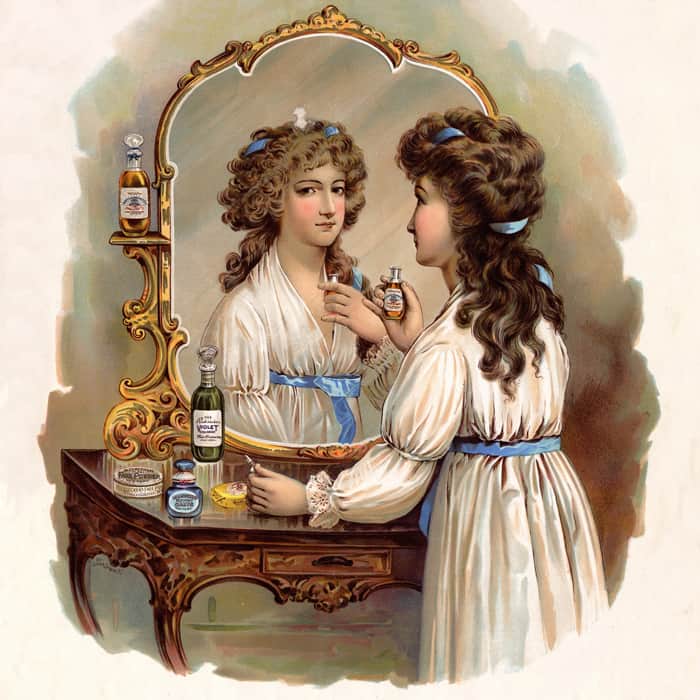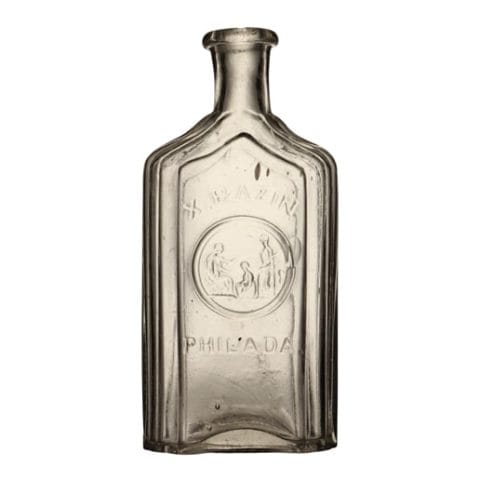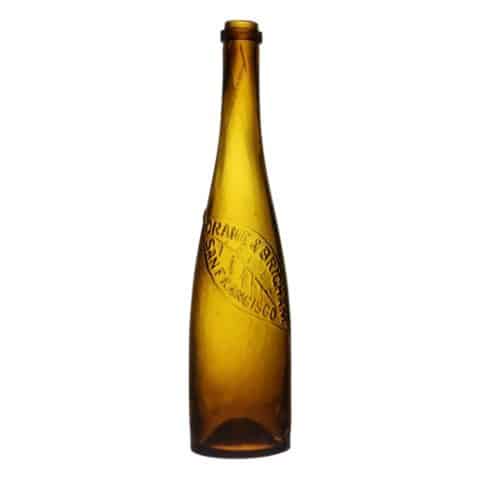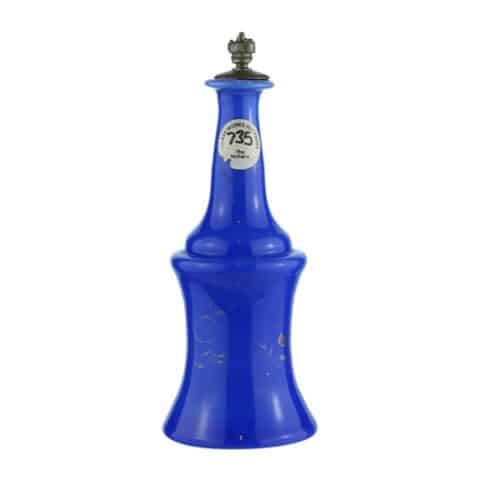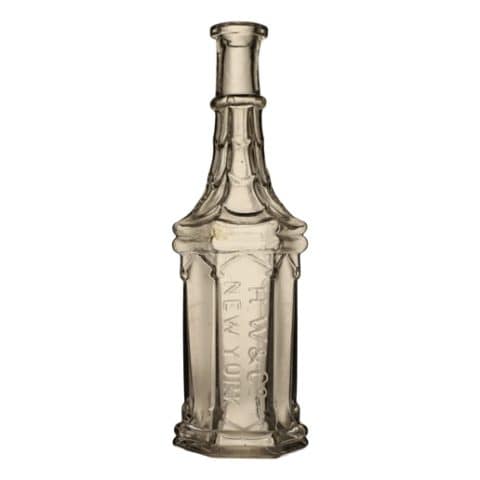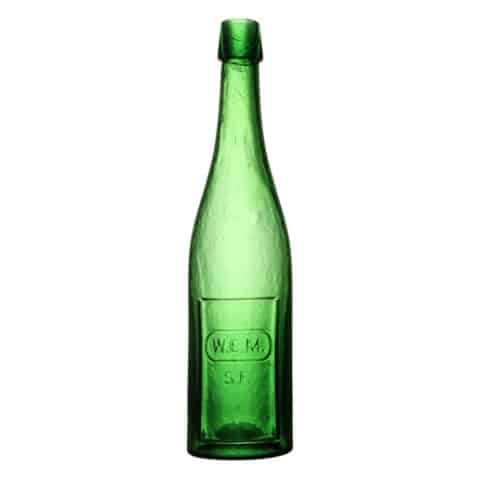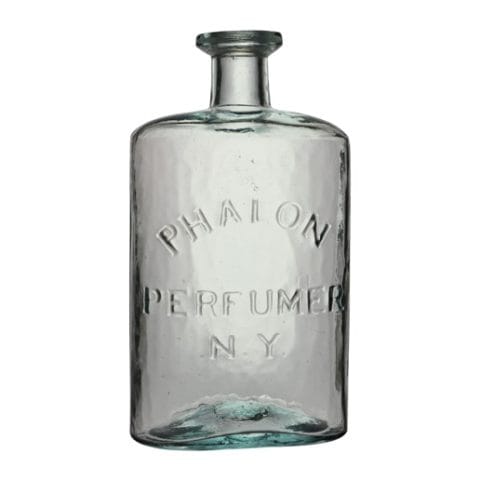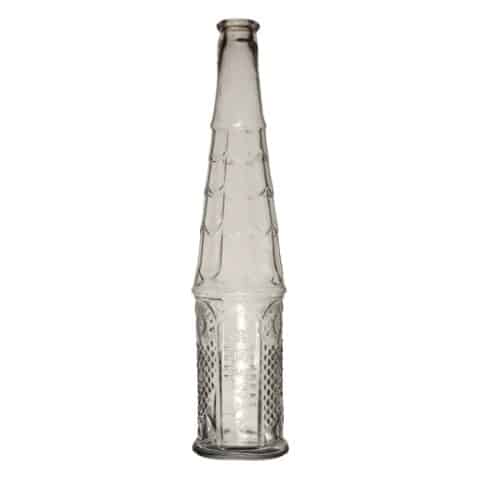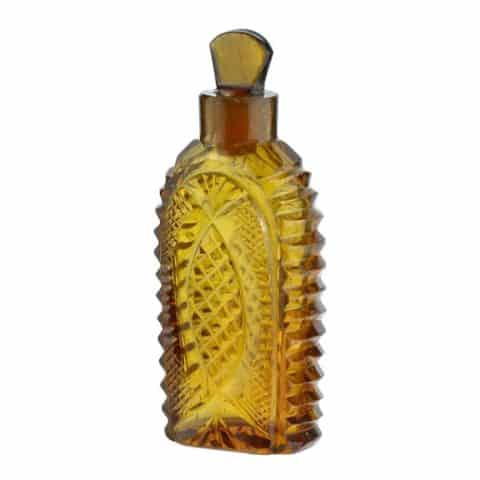Title on Mobile
Scent Bottle with Stopper
Ireland
Yellow-Amber, Rectangular with Cut Designs
Provenance: Cheryl Reynolds Collection
Ex Charles B. Gardner #636
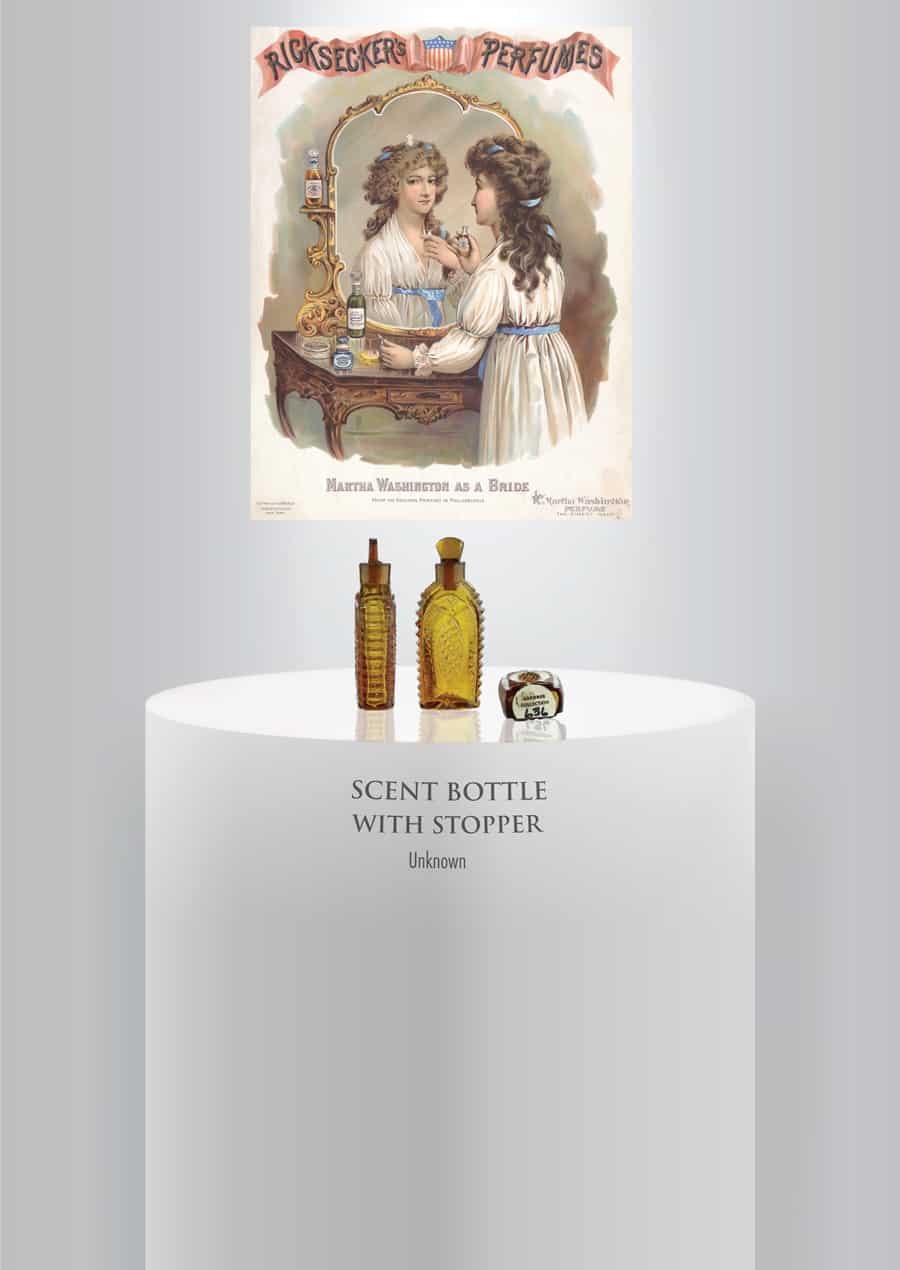
Imported perfumes were one of the first cosmetic products sold in American apothecaries and pharmacies. As the colonies’ economy improved, it encouraged a growing social life that required certain fashionable accessories. Among them were smelling and scent bottles. The smelling bottles were pretty trinkets in a lady’s pocket and were frequently necessary to supply a pause in the conversation. Snuff was also sold though those types of bottles are represented in our Utilities Gallery.
A newspaper advertisement representing Thomas Tisdale, first appearing in the Hartford Courant on June 30, 1788, listed dozens of glass products he was selling, like “Smelling Bottles of various shapes, so absolutely necessary for little Misses in the approaching hot season and at the small price of 8d. each.”
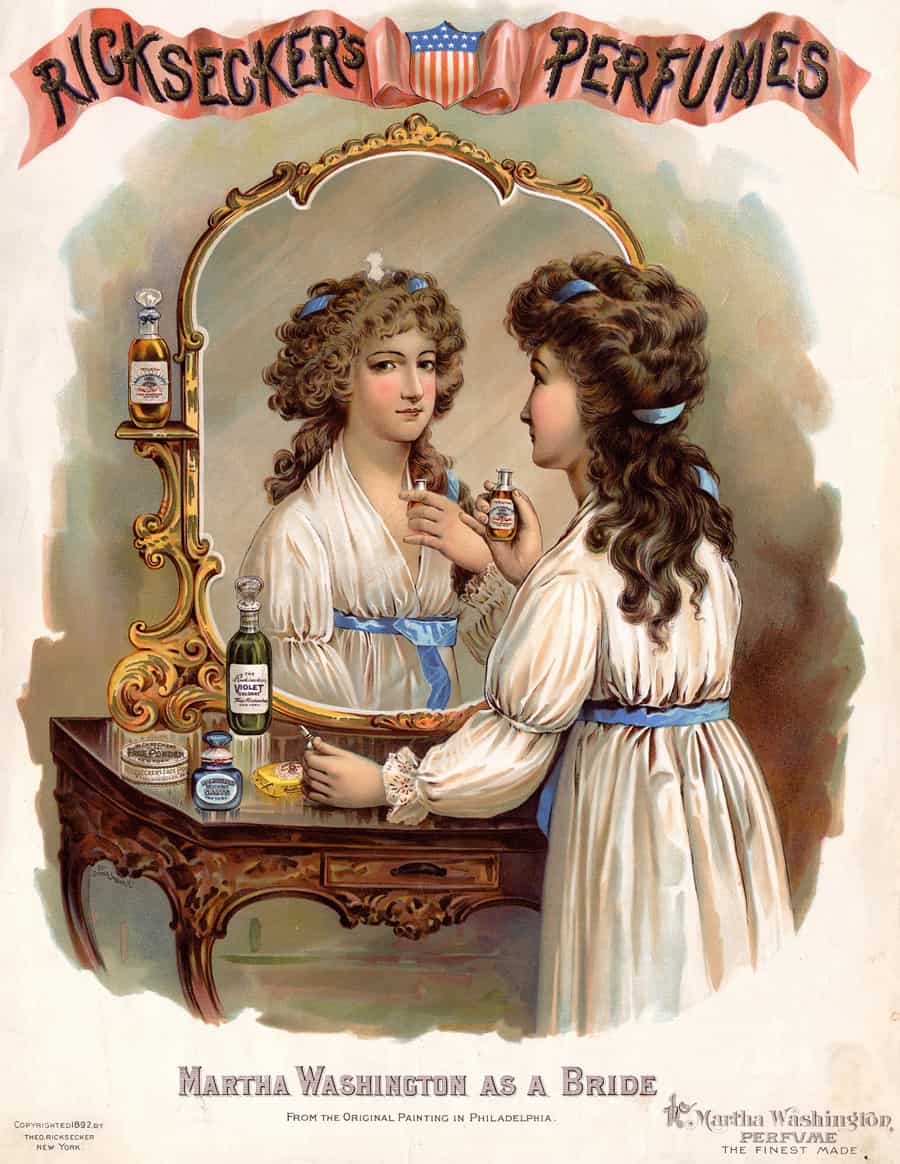
Scent bottles, however, may have served a more serious purpose than fashion in those pre-deodorant days; as in previous centuries, surely the fastidious appreciated a means of masking unpleasant odors. Smelling bottles, too, served a most useful purpose: when tight corseting was in vogue, a whiff from a smelling-bottle would revive a lady from the vapors and fainting spells to which the severe lacing made her subject. So was that, through a combination of fashion and necessity, smelling bottles, or pungent bottles as they later came to be called, became almost as common in the 18th and 19th centuries as lipsticks are today.

Our rare yellow-amber scent bottle is rectangular, has a blown and wheel-cut design, and measures 2 3/8 inches tall by 1 1/8 inches wide by 11/16 inches at the greatest depth. The bottle has rounding at the shoulders, a short neck, and a plain lip. The sides have fan cutting above and below a slender diamonded lozenge flanked by notching between cross-hatching. The ends are corrugated by triangular ribs. There is a ground stopper and a smooth base. The bottle would contain one-half an ounce. The consignor reports that it may be unique.
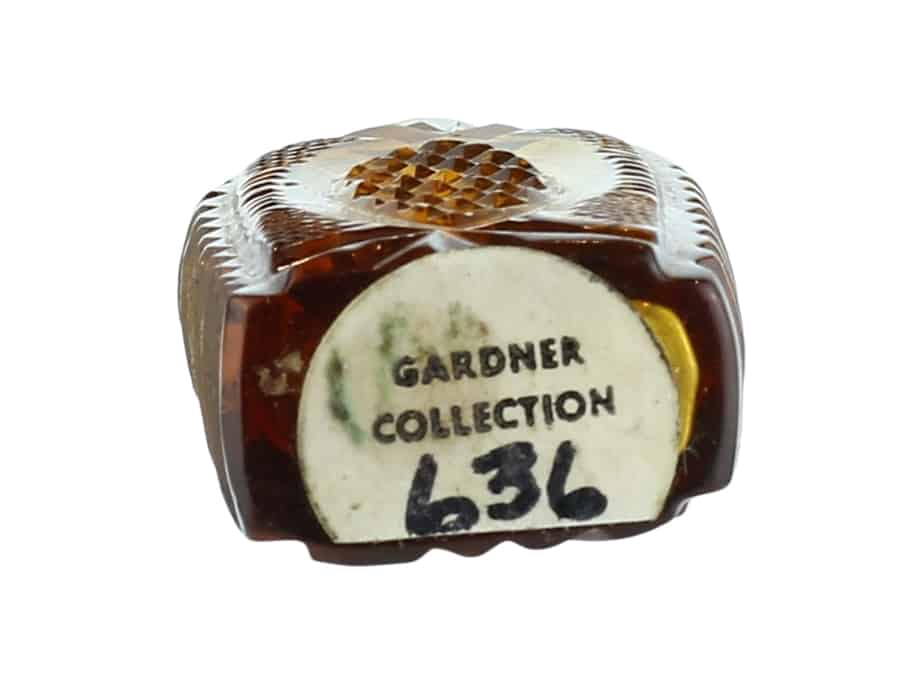
A similar example can be seen, without the top in McKearin #24, plate 241. There is also a picture in the McKearin Two Hundred Years of American Blown Glass that shows the bottle with the top. There is a Gardner Collection lot number 636 sticker on the base. The bottle is attributed to Ireland, ca. 1810 though some think a bit later in the century.
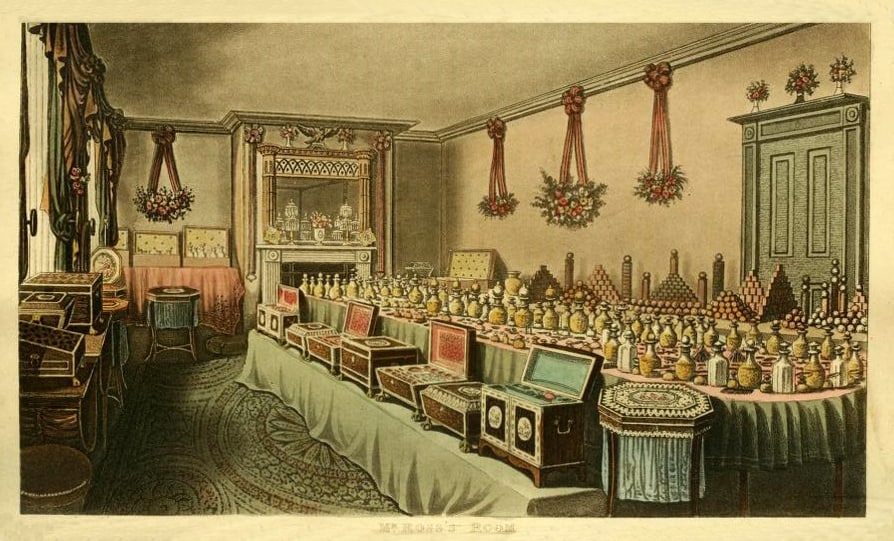
Primary Image: “Scent Bottle with Stopper” imaged by Alan DeMaison at the FOHBC Reno 2022 National Antique Bottle Convention mobile imaging station.
Support Image: Ricksecker’s Perfumes advertisement for Martha Washington perfume – Warshaw Collection of Business Americana, Archives Center, National Museum of American History, Smithsonian Institution.
Support Image: Interior of the shop of Alex Ross, a perfumer in London; a large table displays the many perfume bottles and scents on offer, wooden chests on a bench next to the table contain further goods; garlands of flowers hang from walls. – All Things Georgian.
Support: Reference to American Bottles and Flasks and Their Ancestry by Helen McKearin and Kenneth M. Wilson, Crown Publishers, New York, 1978.
Support: Reference to American Glass by George S. and Helen McKearin, Crown Publishers Inc., New York, 1989.
Support: Reference to Two Hundred Years of American Blown Glass by Helen and George S. McKearin, January 1, 1958
Support: Reference to American Bottles in the Charles B. Gardner Collection, Norman C. Heckler, Published by Robert W. Skinner Inc., Bolton, Massachusetts, 1975
Join the FOHBC: The Virtual Museum is a project of the Federation of Historical Bottle Collectors (FOHBC). To become a member.

